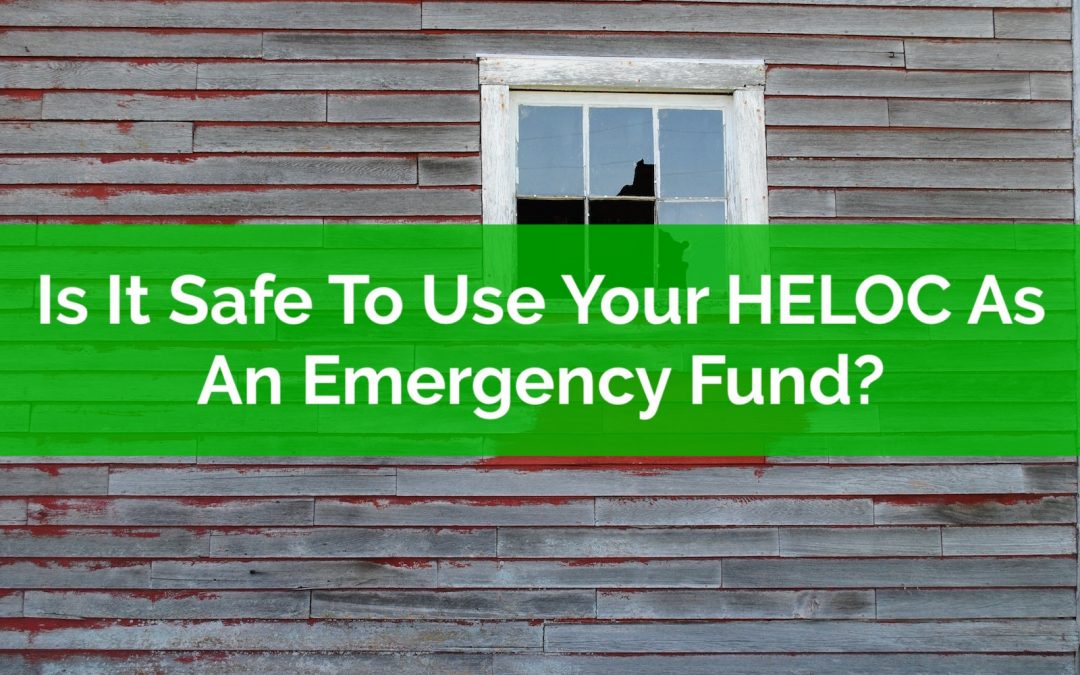
by Owen | Dec 13, 2021 | Emergency Fund, Financial Planning, Insurance And Risk Management, Investment Planning
Is it safe to use your HELOC as an emergency fund? A typical emergency fund is between 3 months and 6 months of expenses, but that’s a lot of cash to have lying around!
Cash is the enemy of long-term goals. Holding too much cash makes it more difficult to achieve long-term goals like retirement. The more cash-on-hand there is, the lower the average investment return.
Holding some cash is good. A certain amount of cash-on-hand protects us against unexpected emergencies like a job loss, a disability, a health emergency etc. etc. But holding too much cash is bad.
For homeowners with a certain amount of home equity there is another option. This option allows homeowners to decrease the size of their emergency fund and put more into RRSPs and TFSA sooner. This can provide more investment growth and potentially a reduction in income tax and an increase in government benefits.
Homeowners with a certain amount of home equity could choose a hybrid option, with a smaller amount of cash-on-hand but leaning on a Home Equity Line of Credit (HELOC) for larger emergencies.
But is this hybrid option safe? Is it safe to use your HELOC as an emergency fund? Let’s take a look at why, and why not, to use your HELOC as an emergency fund.
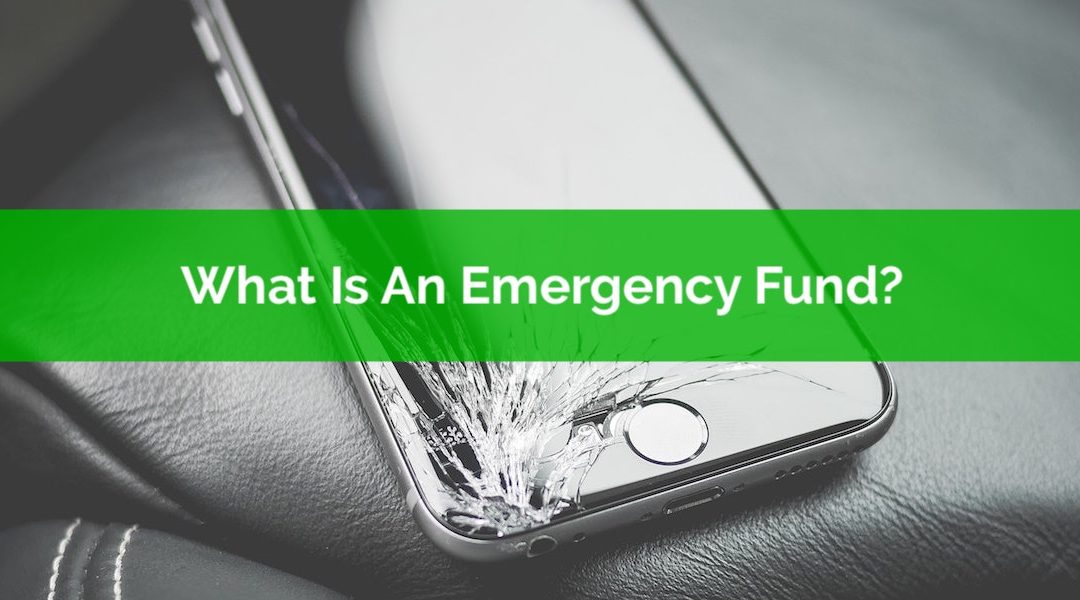
by Owen | Jun 7, 2021 | Emergency Fund
Remember when you were a kid and you didn’t have a care in the world? No responsibilities, nothing to worry about, nothing to stress over. Well you can get that feeling again, or close to it, by having an emergency fund.
An emergency fund, or “e-fund”, is amazing! An emergency fund is like a big financial blanket. It helps you stay warm and cozy during a rough financial storm.
You can also think of an emergency fund like a seat belt. Most of the time it’s just there doing nothing… but when an emergency happens your e-fund jumps into action to prevent serious financial harm.
An emergency fund is a pile of money you keep tucked away in a safe place in case of a financial emergency. Your pile of emergency savings should be equivalent to 3-6 months of living expenses, but it can be much smaller to start.
Emergency funds can be smaller if you have high interest debt (which should be a priority), or if you have a strong safety net (ie. parents, friends, relatives that can help provide support or help reduce expenses in an emergency).
Building an emergency fund takes time. It’s something you should contribute to regularly with each paycheck.
Emergencies happen from time to time so your budget should include monthly savings to replenish your e-fund.
To be honest, e-funds are boring. An emergency fund should be invested in a high-interest savings account earning 1-2% interest. This protects the principal but it can also feel very boring. In this case though, boring is good. Boring means that your money will definitely be there when you need it most.
It can be tempting to invest your emergency fund in the stock market…
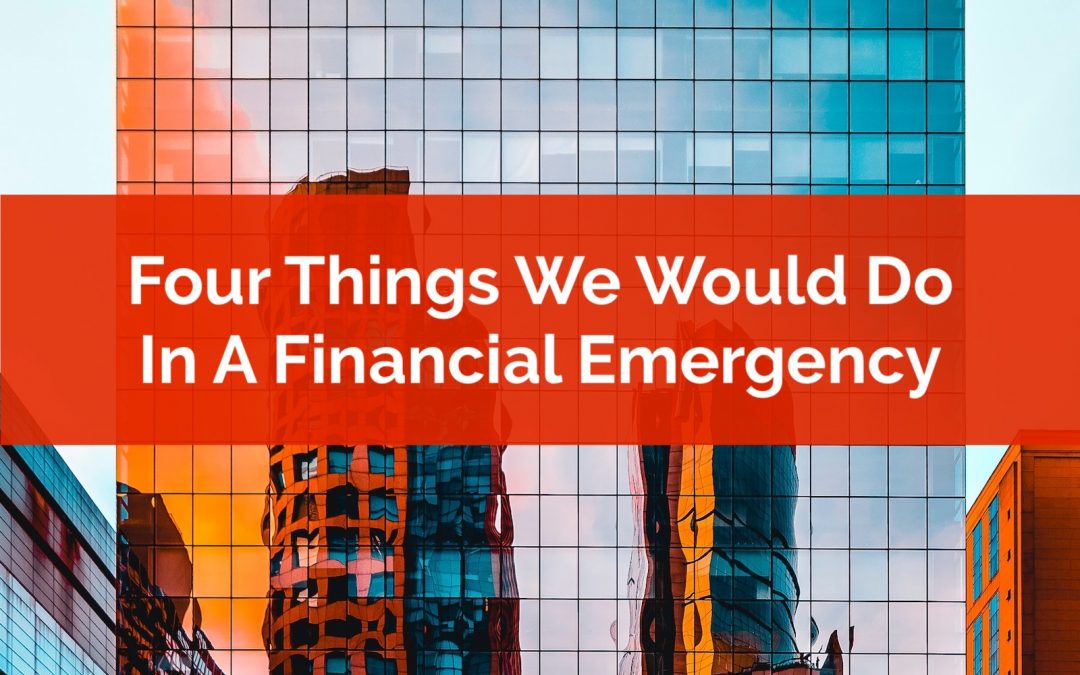
by Owen | Nov 23, 2020 | Budgeting, Emergency Fund, Financial Planning
What would you do in a financial emergency? What steps would you take? Do you have a plan in place?
It turns out that nearly 4 out of 10 people don’t have even a basic plan for a financial emergency. In the latest Financial Planning Canada survey, nearly 40% of respondents said they do not have an emergency fund.
While that stat is pretty alarming, the good news is that 6 out of 10 people are saving for an emergency, but is that the only thing you can do?
Our plan includes multiple layers of protection if we were faced with a major financial emergency. There are four key things that we would do. These four things would allow us to cover basic expenses for 5+ years! How’s that for peace of mind!
This 5-year “safety net“ wasn’t something that we created overnight, but we’re thankful we now have a strong plan just in case the worst were to happen. We hope to never get to that point, but it’s nice knowing we have a solid plan that’s ready to go in case things get really, really tough.
Here are the four things we would do in a financial emergency…
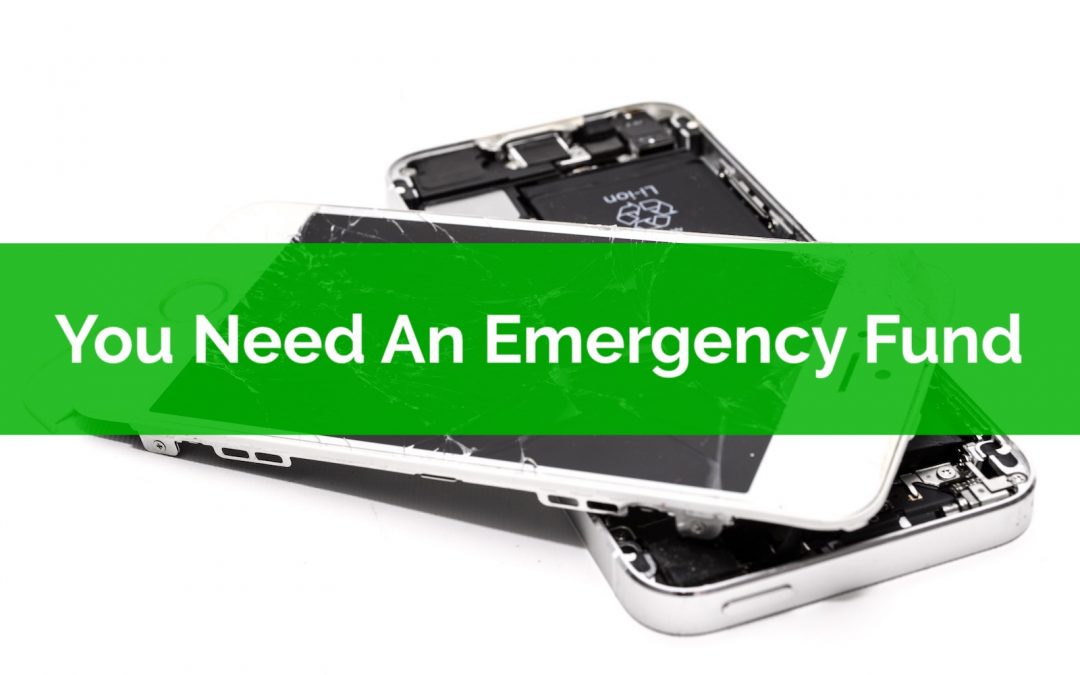
by Owen | Aug 31, 2020 | Behavioral Finance, Emergency Fund, Retirement Planning, Saving Money
Out of all the ‘best practices’ in personal finance, emergency funds are probably the simplest and most effective. There is nothing easier to set up and nothing that provides more peace of mind than an emergency fund.
Emergency funds are boring, they are simple, and they hopefully never get used.
The purpose behind an emergency fund is simple. An emergency fund should provide quick access to cash in the event of an emergency. An emergency should be something truly unexpected like a job loss, a health emergency, an unexpected repair, an accident etc. Using an emergency fund for an expected expense is NOT the right way to use an emergency fund (more on that later).
Emergency funds can also be called an ‘e-funds’, ‘rainy day’ funds, or ‘oh $h!t’ funds. Whatever you call it, the purpose is the same, to help ease the financial burden during an emergency.
Yet, as simple as emergency funds are, they sometimes get used incorrectly. In this post we explore what an emergency fund is, how to set one up, how large it should be, and what NOT to do with an emergency fund.
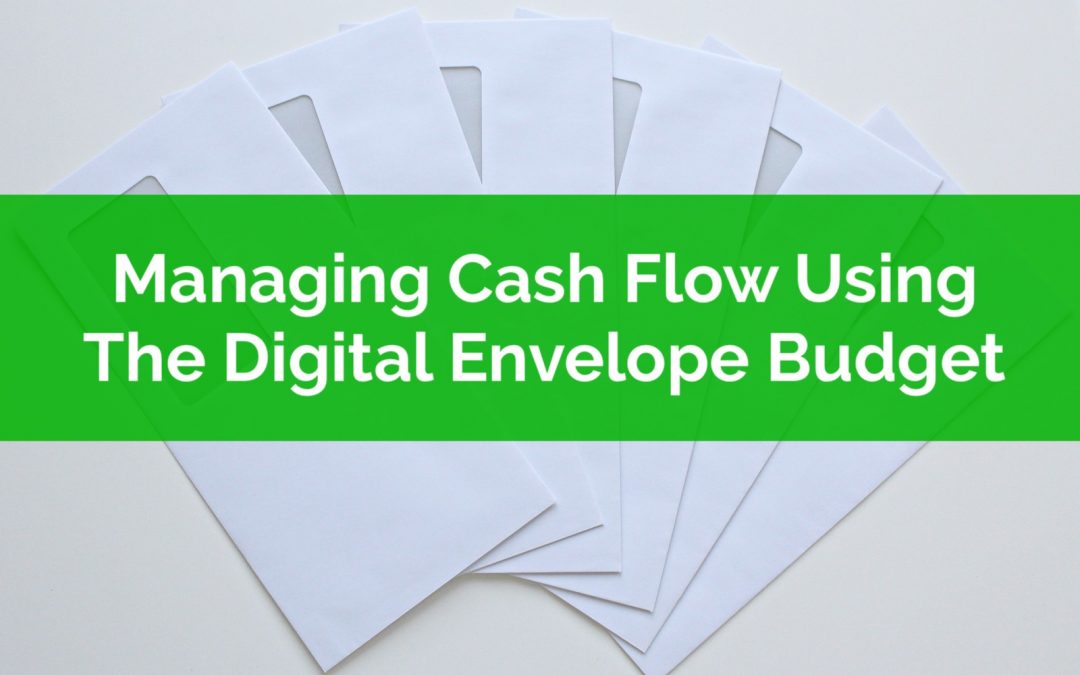
by Owen | Jul 20, 2020 | Behavioral Finance, Budgeting, Emergency Fund
Whether it’s a torrent or a trickle, having a system to manage cash flow can help make money easy. One of the most time-consuming things about personal finances is managing income and spending. But what if you had a budgeting system that helped you manage that monthly cash flow? And what if that system was free, easy to set up, and simple to maintain?
Managing income and spending is the best way to achieve financial freedom. It doesn’t take much to go from financial ruin to financial success. It can be as little as $10 per day. It’s not about stellar investment returns, or risky real estate investing, or earning six figure salary, it’s all about paying attention to income and spending.
But old methods of managing cash flow need to be updated for the digital age. Cash is less prevalent, and credit and debit transactions dominate. Any system for managing income and spending needs to be digital, automated, and easy to set up and maintain.
The envelope budget is a classic way to manage income and spending. It’s a proven way to manage cash flow and it’s easy to understand. Money gets allocated to certain envelopes and spent during the month. As money in an envelope gets low this provides a signal to slow down on spending until the envelope gets replenished on the next payday.
Thanks to no-fee online bank accounts, the envelope budget can be easily adapted to the digital age.
But it’s not as simple as just creating a few new bank accounts. To manage cash flow with the digital envelope budget system it helps if you have a budget already created. This may require tracking your spending for a few weeks or months. Or it may require looking at past statements. It also requires an online no-fee bank account.
This is how you set up the digital envelope budget system.
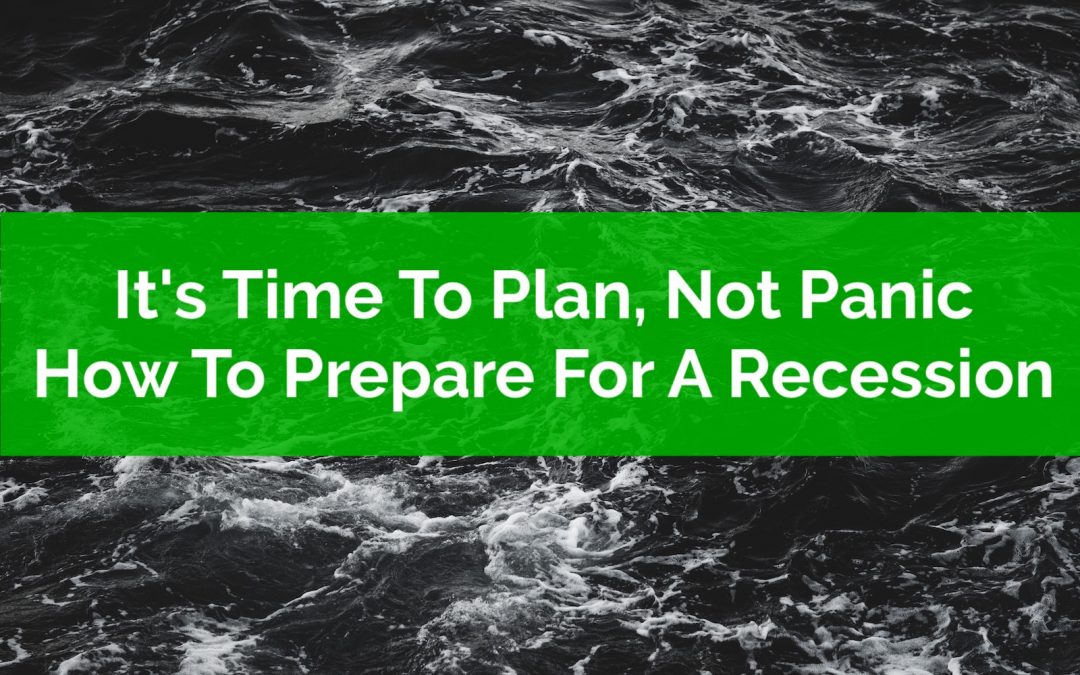
by Owen | Mar 16, 2020 | Behavioral Finance, Budgeting, Emergency Fund, Financial Planning, Income, Investment Planning, Retirement Planning, Saving Money
They say the best time to plant a tree was 20-years ago but the second best time is now.
The same goes for financial planning. The best time to build a plan is before a crisis/recession/depression but the second best time is today. A good financial plan will help ensure that you’re prepared for a recession or financial emergency.
Having a financial plan provides an incredible amount of peace of mind. A good financial plan will already have anticipated a scenario like this and will ensure you’re still successful. It will highlight how to prepare for a recession and what changes you need to make to ensure you are successful over the long-term.
There are a few best practices that can help improve the ‘robustness’ of a financial plan. These are practices you can start using right away, even if they weren’t previously part of your plan.
Some of these best practices focus on behavior. They help manage your financial routine during emotional periods like this. Some focus on flexibility. They ensure that you have room in your plan to absorb the unexpected, whether that be changes in income, changes in expenses, or changes in investment returns.
It doesn’t matter if you’re in retirement, starting a family, or just starting to save and invest, there are a number of ways that you can prepare for a recession that will help you feel better about your finances and your long-term plan.
This post will touch on many of these best practices. These are best practices that we’ve covered in previous posts, so we’ll cover the basics here and link to past posts for more detail.






